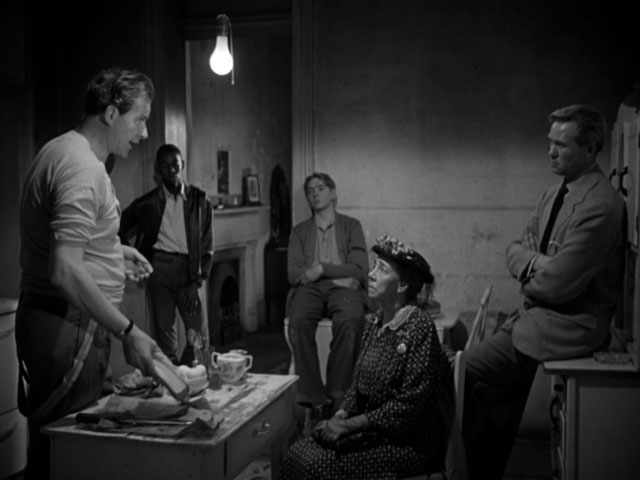

The story closely follows that of Faulkner's 1948 novel. Instead of simply showing the injustice of racism, Faulkner penetrated into the psychology of a particularized black man, whose main affront is that he refuses to play the "submissive negro" for his white neighbors. The show was filmed in Faulkner's hometown of Oxford Mississippi, standing in for the book's Jefferson. Clarence Brown produced and directed this fine film, adapted from a book by William Faulkner. Hollywood could admit that Jews existed, but not gays.īy far the most artistically successful immediate postwar look at racial tension is MGM's 1949 Intruder in the Dust. Schary's Crossfire was about the hate killing of a Jew in the source story the victim had been a homosexual. Fox's Pinky cast white actors as blacks, as did the boldly honest independent Lost Boundaries. The Box office still ran on white star-power. At about the same time that the armed forces were desegregated, liberal producers like Dore Schary and Darryl Zanuck were finding success fashioning outspoken, but compromised films. The immediate postwar years saw a new wave of crusading pictures that stepped boldly forward on previously untouched subjects - racial and ethnic prejudice. The "social problem" movies of the 1930s voiced strong liberal opinions on subjects like lynching ( They Won't Forget), prison corruption ( I Am a Fugitive from a Chain Gang) and bigoted secret societies ( Black Legion). Written by Ben Maddow from the novel by William Faulkner Starring David Brian, Claude Jarman Jr., Juano Hernandez, Porter Hall, Elizabeth Patterson, Charles Kemper, Will Geer.
Intruder in the dust movie archive#
Street Date Febru/ available through the Warner Archive Collection / 19.95 "The Click of the Spring: The Detective Story as Parallel Structure in Dostoyevsky and Faulkner". Theoria: A Journal of Social and Political Theory. "The Style of Faulkner's INTRUDER IN THE DUST". "Avoiding Adjudication in William Faulkner's Go Down, Moses and Intruder in the Dust". ^ Sassoubre, Ticien Marie (Spring 2007)."Gavin Stevens in Faulkner's Intruder in the Dust: Only Too Rhetorical Rhetoric?". "Gradual Progress and Intruder in the Dust". "William Faulkner and the Social Conscience". Rabinowitz has specifically looked at Faulkner's treatment of the form of the detective story, in the context of the genre of the "discovery novel," in Intruder in the Dust. Hutchinson has elucidated the unifying literary devices of the novel. Ticien Marie Sassoubre has examined the novel in the context of the social issues related to lynching in the American South, and then-recent American federal law with respect to black Americans. Graham has discussed the contrasting rhetorical styles of Gavin and Chick throughout the course of the novel. Bassett has commented that this novel represents a "serious attempt to explore contemporary Southern racism through Gavin and Chick." Jean E. In a 1949 contemporary analysis of Faulkner's work, Dayton Kohler noted the particular feature of Intruder in the Dust of its dramatization of the hope of regeneration of the American Southern conscience, with respect to the position of black Americans in Southern American society. In her contemporary review of the novel, Eudora Welty noted its humor. The film was shot in Faulkner's home town of Oxford, Mississippi. Intruder in the Dust was turned into a film of the same name directed by Clarence Brown in 1949 after MGM paid film rights of $50,000 to Faulkner.


A story by Faulkner, "Lucas Beauchamp," was published in 1999. The characters of Lucas Beauchamp and his wife, Molly, first appeared in Faulkner's collection of short fiction, Go Down, Moses. The novel also includes lengthy passages on the Southern memory of the Civil War, one of which Shelby Foote quoted in Ken Burns' documentary The Civil War. Intruder in the Dust is notable for its use of stream of consciousness style of narration. It was written as Faulkner's response as a Southern writer to the racial problems facing the South. He is exonerated through the efforts of black and white teenagers and a spinster from a long-established Southern family. The novel focuses on Lucas Beauchamp, a black farmer accused of murdering a white man.


 0 kommentar(er)
0 kommentar(er)
